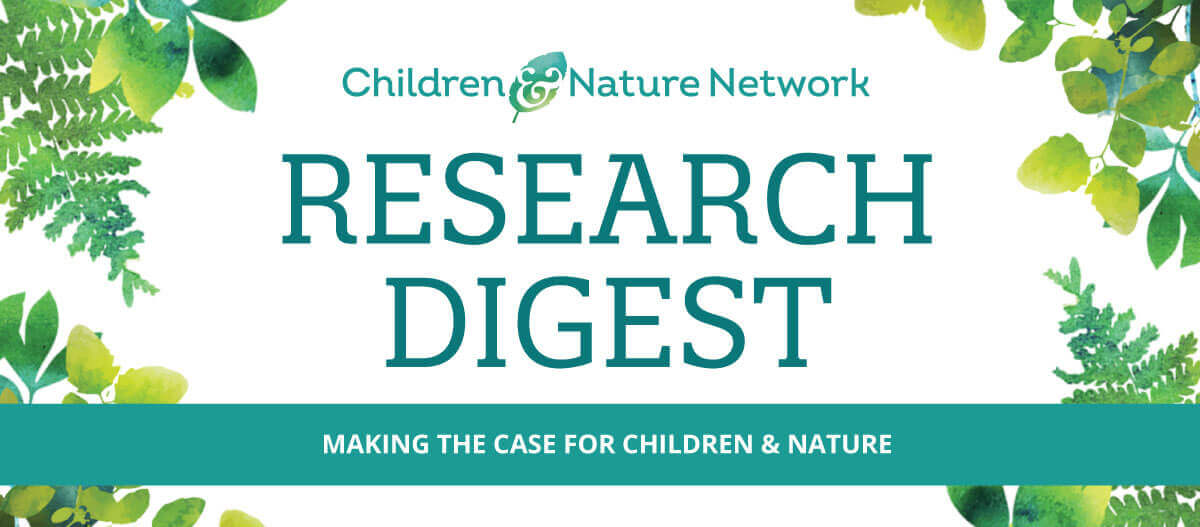NATURE-BASED ART ACTIVITIES CAN PROMOTE NATURE AWARENESS AND SENSITIVITY
Nature play embedded in participatory arts fosters nature connectedness and environmental agency.
Local artists, scientists and Indigenous elders worked with Australian youth in nature-based art activities. Positive outcomes included deeper understanding of biodiversity and increased capacity for agency and independence in the environment.
Beer, Cook & Kantor, 2018. Running Wild: Engaging and empowering future custodians of place through creative nature-based play.
Access Study
Using different forms of art helped children express their knowledge about nature and sustainability.
Children in Australia served as co-researchers in a study investigating children’s perspectives of sustainability. The children expressed interest in using art to share their understandings. Interviews about their art indicated that the children learned about nature and sustainability through interactions with material entities in diverse environments, such as gardens, wetlands, and farms.
Green, 2017. ‘If there’s no sustainability our future will get wrecked’: Exploring children’s perspectives of sustainability.
Access Study
Garden-based art education programs can promote environmental awareness and advocacy.
Outdoor artworks created as part of a garden-based art education program at a school in Toronto raised public awareness of environmental issues and played a role in the school achieving gold-level EcoSchool status.
Inwood & Sharpe, 2018. Growing a garden-based approach to art education.
Access Study
Nature-focused activities embedded in a preservice teacher program can promote knowledge, skills, and dispositions for early childhood education.
An early childhood teacher educator embedded nature-focused activities into her curriculum to help preservice teachers develop an emotional connectedness to nature and to help them develop strategies for fostering nature connectedness for the young children in their classrooms. Her goal was to make nature education a part of the teachers’ identity.
Murphy, 2017. Fostering connections to nature – Strategies for community college early childhood teachers.
Access Study
A pedagogy of place in art education may help students understand connections between the landscape and their sense of self.
An elementary art educator adapted traditional place-based pedagogy by using it as an analogy of the influence of place on identity. This approach helped students gain confidence in their identity as artists and helped them understand how the landscape influenced their identities.
Neves & Graham, 2018. Place-based practice: Landscapes and artistic identity in an elementary art classroom.
Access Study
Aesthetic experiences integrated into science education can heighten children’s cognition and their engagement with the natural world.
This theoretical article proposes a model of science education that embeds aesthetic experiences into the curriculum. The model focuses on caring and belonging and is designed to deepen students’ awareness of being grounded in the world.
Østergaard, 2017. Earth at rest: Aesthetic experience and students’ grounding in science education.
Access Study
Arts-based environmental education can promote pro-environmental mindsets.
Artists and environmental experts working together explored art-science collaboration as an approach to familiarize students with agricultural nature, biodiversity conservation, and the agency of non-human natural elements. The art-science program which they developed proved to be effective in promoting students’ emotional and philosophical nature connectedness.
Raatikainen et al. 2020. “Face the cow”: Reconnecting to nature and increasing capacities for pro-environmental agency.
Access Study
An arts-based environmental education program increases students’ environmental knowledge and provides an avenue for advocacy.
The intent in adding art to a science curriculum was to help fifth- and sixth-grade students learn about the Hudson River Watershed, environmental issues, and ecosystem recovery. Students participating in the program made significant gains in environmental knowledge. Their environmental attitude scores also improved, but not significantly.
Schneller et al. 2021. Outcomes of art-based environmental education in the Hudson River Watershed.
Access Study





